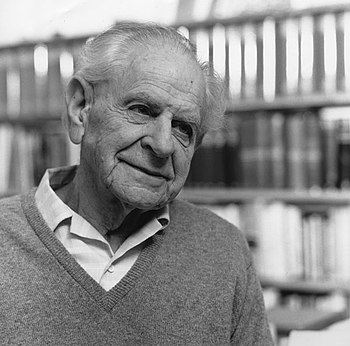In Oceanic mythology Rona is a fierce female cannibal who eats her beautiful daughter’s lover.¹
Another Oceanic myth tells of a male god, Rona, who fights the moon to rescue his abducted wife.² According to this story, when the moon tires from the battle with Rona, it wanes. When the moon regains its strength, it waxes.
This is a good example of what might be called alternative logic, lateral thinking or, for some, anthropomorphism. From his fieldwork, the depth psychiatrist Carl Jung observed that archaic myths are logical and meaningful to so-called primitives, just as scientific explanations appear logical and meaningful to many so-called advanced, thinking persons.
More recently, postmodern critiques of science tend to view theories as working myths or fictions instead of facts. This makes sense if one is willing to admit bias and the limits of human understanding.

Take Karl Popper, for instance. He points out that scientific theories are never really proved, per se, but only supported. Also, scientific theories are subject to falsification, modification or radical change through, as T. Kuhn suggests, a paradigm shift. We know that Newton’s Laws of Motion perform well for conventional problems. But Einstein’s work is required for areas that Newton couldn’t observe and probably didn’t imagine.³
Somewhat ahead of his time, Jung says he treated so-called primitives with respect and, when interviewing local elders and tribesmen, didn’t challenge their beliefs or try to convert them to a modern scientific or, for that matter, Protestant Christian perspective.4
A considerate move on Jung’s part. Imagine if advanced extraterrestrials publicly visited Earth. Let’s say the visitors could see beyond our common view of directional time and the (apparent) solidity of matter. These beliefs are important to the functioning and psychological security of 21st century mankind. So if ETs revealed too much knowledge too fast, they’d likely blow our minds as David Bowie put it in the song “Starman.”
Likewise, had Jung tried to convince indigenous peoples that the sun’s rising did not depend on contemplation and sacrifice but, rather, the Earth’s natural rotation, he might have upset their psychological wellness.5
This raises questions about our “developed” cosmological assumptions and how they tie in to the idea of progress. Clearly this topic can go in many directions. I touch on some of these in entries on numinosity, spirituality, mysticism, science, psychiatry and scientism, among others.
—
¹ See http://www.sacred-texts.com/pac/om/om08.htm for the source of these and also for this Wikipedia retelling:
According to Māori legend, a Ngaio tree can be seen on the moon:
The man in the moon becomes, in Māori legend, a woman, one Rona by name. This lady, it seems, once had occasion to go by night for water to a stream. In her hand she carried an empty calabash. Stumbling in the dark over stones and the roots of trees she hurt her shoeless feet and began to abuse the moon, then hidden behind clouds, hurling at it some such epithet as “You old tattooed face, there!” But the moon-goddess heard, and reaching down caught up the insulting Rona, calabash and all, into the sky. In vain the frightened woman clutched, as she rose, the tops of a ngaio-tree. The roots gave way, and Rona with her calabash and her tree are placed in the front of the moon for ever, an awful warning to all who are tempted to mock at divinities in their haste.

² Ibid.
³ See Reddit – Ask Science.
4 My PhD thesis suggests that Jung thinks and behaves like a postmodern before the idea of postmodernism becomes fashionable. Jung’s father, Paul, was a Protestant minister who said Carl had to “believe.” Jung later writes that he doesn’t know how he is to find this belief. With access to his father’s theological library, the young Jung took to Latin and religious studies like a dove to water.
5 Jung interviewed a Hopi elder and other Native Americans who held these beliefs. See cgjungpage.org.







